About Simultaneous Body SAR: What You Need to Know
Specific Absorption Rate (SAR) is a measure of the amount of radiofrequency (RF) energy that is absorbed by the human body when exposed to wireless devices such as mobile phones, laptops, and tablets. SAR values ensure that these devices meet safety standards and do not pose any health risks to the user. But, truth be told, the FCC lost a big lawsuit because these guidelines are a quarter of a century outdated.
| SAR Rank | Phone Model | Simultaneous Body SAR | % Legal Limit |
|---|---|---|---|
1st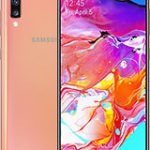 | Samsung Galaxy A70 | 0.44 W/kg | 27.5% |
2nd | Samsung Galaxy S21 FE | 0.61 W/kg | 38.13% |
3rd | Samsung Galaxy A50 | 0.68 W/kg | 42.5% |
| 4th | GOOGLE PIXEL 6 PRO | 0.78 W/kg | 48.75% |
5th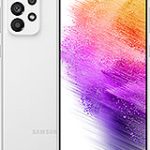 | SAMSUNG GALAXY A73 | 1.00 W/kg | 62.5% |
Tied 5th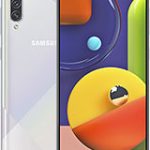 | Samsung Galaxy A50S | 1.00 W/kg | 62.5% |
| 6th | Google Pixel 2 | 1.04 W/kg | 65% |
| 7th | Google Pixel 5A 5G | 1.05 W/kg | 65.63% |
Tied 7th | Samsung Galaxy A14 | 1.05 W/kg | 65.63% |
Tied 7th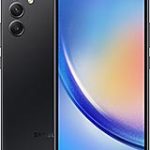 | Samsung Galaxy A24 4G | 1.05 W/kg | 65.63% |
| SAR Rank | Phone Model | Simultaneous Body SAR | % Legal Limit |
Tied 7th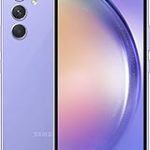 | Samsung Galaxy A54 5G | 1.05 W/kg | 65.63% |
8th | SAMSUNG GALAXY A72 | 1.07 W/kg | 66.88% |
9th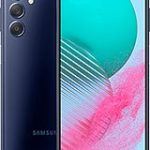 | Samsung Galaxy M54 | 1.09 W/kg | 68.13% |
10th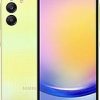 | Samsung Galaxy A25 | 1.11 W/kg | 69.38% |
Tied 10th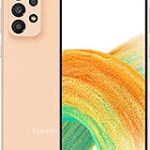 | Samsung Galaxy A33 5G | 1.11 W/kg | 69.38% |
11th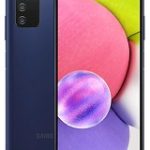 | Samsung Galaxy A03s | 1.13 W/kg | 70.63% |
12th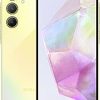 | Samsung Galaxy A35 | 1.16 W/kg | 72.5% |
Tied 12th | Samsung Galaxy Z Flip4 | 1.16 W/kg | 72.5% |
13th | SAMSUNG GALAXY A14 5G | 1.17 W/kg | 73.13% |
| 14th | GOOGLE PIXEL 7 PRO | 1.18 W/kg | 73.75% |
| SAR Rank | Phone Model | Simultaneous Body SAR | % Legal Limit |
15th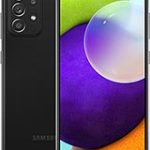 | SAMSUNG GALAXY A52 | 1.21 W/kg | 75.63% |
Tied 15th | Samsung Galaxy S8 Plus | 1.21 W/kg | 75.63% |
16th | Samsung Galaxy A34 | 1.31 W/kg | 81.88% |
17th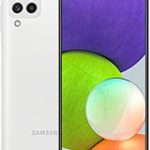 | SAMSUNG GALAXY A22 | 1.33 W/kg | 83.13% |
Tied 17th | Samsung Galaxy A23 4G | 1.33 W/kg | 83.13% |
18th | Samsung Galaxy S20 FE | 1.34 W/kg | 83.75% |
19th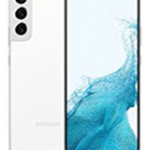 | Samsung Galaxy S23 | 1.35 W/kg | 84.38% |
20th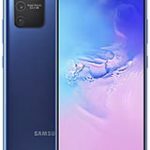 | Samsung Galaxy S10 Lite | 1.36 W/kg | 85% |
21st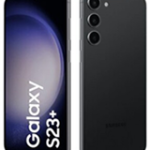 | Samsung Galaxy S23 Plus | 1.37 W/kg | 85.63% |
22nd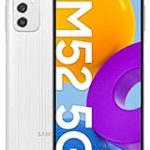 | SAMSUNG GALAXY M52 5G | 1.38 W/kg | 86.25% |
| SAR Rank | Phone Model | Simultaneous Body SAR | % Legal Limit |
23rd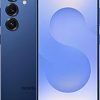 | Samsung Galaxy S25 | 1.39 W/kg | 86.88% |
24th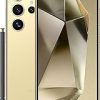 | Samsung Galaxy S25 Ultra | 1.40 W/kg | 87.5% |
25th | Samsung Galaxy A23 5G | 1.42 W/kg | 88.75% |
Tied 25th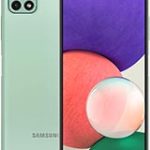 | SAMSUNG GALAXY A22 5G | 1.42 W/kg | 88.75% |
26th![apple-iphone-13-mini[1]](https://www.rfsafe.com/wp-content/uploads/2020/12/apple-iphone-13-mini1-66x66.jpg) | Apple iPhone 13 Mini | 1.43 W/kg | 89.38% |
27th | Apple iPhone 15 | 1.44 W/kg | 90% |
| 28th | Google Pixel 6A | 1.45 W/kg | 90.63% |
Tied 28th | Samsung Galaxy A13 | 1.45 W/kg | 90.63% |
Tied 28th![apple-iphone-13[1]](https://www.rfsafe.com/wp-content/uploads/2020/12/apple-iphone-131-66x66.jpg) | Apple iPhone 13 | 1.45 W/kg | 90.63% |
Tied 28th | Apple iPhone 13 Pro Max | 1.45 W/kg | 90.63% |
| SAR Rank | Phone Model | Simultaneous Body SAR | % Legal Limit |
29th | Apple iPhone 14 Pro Max | 1.46 W/kg | 91.25% |
30th | SAMSUNG GALAXY A32 5G | 1.47 W/kg | 91.88% |
Tied 30th | SAMSUNG GALAXY A51 5G | 1.47 W/kg | 91.88% |
31st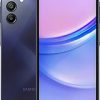 | Samsung Galaxy A15 | 1.48 W/kg | 92.5% |
Tied 31st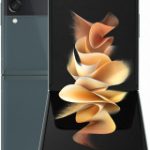 | Samsung Galaxy Z Flip3 | 1.48 W/kg | 92.5% |
Tied 31st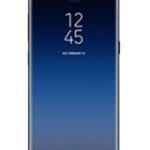 | Samsung Galaxy S9 Plus | 1.48 W/kg | 92.5% |
Tied 31st | Apple iPhone 11 Pro | 1.48 W/kg | 92.5% |
Tied 31st | Apple iPhone 14 PLUS | 1.48 W/kg | 92.5% |
Tied 31st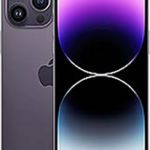 | Apple iPhone 15 Pro Max | 1.48 W/kg | 92.5% |
| 32nd | Google Pixel 5 | 1.49 W/kg | 93.13% |
| SAR Rank | Phone Model | Simultaneous Body SAR | % Legal Limit |
Tied 32nd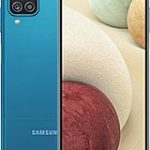 | Samsung Galaxy A12 | 1.49 W/kg | 93.13% |
33rd | Apple iPhone 14 Pro | 1.50 W/kg | 93.75% |
Tied 33rd | Apple iPhone 15 Plus | 1.50 W/kg | 93.75% |
Tied 33rd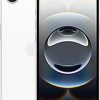 | Apple iPhone 16e | 1.50 W/kg | 93.75% |
34th | Samsung Galaxy S10 5G | 1.51 W/kg | 94.38% |
Tied 34th | Samsung Galaxy S22 Ultra | 1.51 W/kg | 94.38% |
Tied 34th | Apple iPhone 7 Plus | 1.51 W/kg | 94.38% |
Tied 34th | Apple iPhone 12 Mini | 1.51 W/kg | 94.38% |
Tied 34th | Apple iPhone 14 | 1.51 W/kg | 94.38% |
35th | Samsung Galaxy S24 Ultra | 1.52 W/kg | 95% |
| SAR Rank | Phone Model | Simultaneous Body SAR | % Legal Limit |
Tied 35th | Apple iPhone XS MAX | 1.52 W/kg | 95% |
Tied 35th | Apple iPhone 11 | 1.52 W/kg | 95% |
36th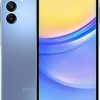 | Samsung Galaxy A15 5G | 1.53 W/kg | 95.63% |
Tied 36th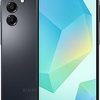 | Samsung Galaxy A16 | 1.53 W/kg | 95.63% |
Tied 36th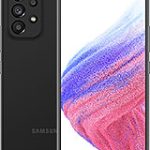 | SAMSUNG GALAXY A53 5G | 1.53 W/kg | 95.63% |
Tied 36th | Samsung Galaxy S20 Plus | 1.53 W/kg | 95.63% |
Tied 36th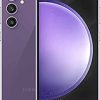 | Samsung Galaxy S24 Fe | 1.53 W/kg | 95.63% |
Tied 36th | Apple iPhone Xs | 1.53 W/kg | 95.63% |
Tied 36th | Apple iPhone 11 Pro Max | 1.53 W/kg | 95.63% |
Tied 36th | Apple iPhone SE 3 (2022) | 1.53 W/kg | 95.63% |
| SAR Rank | Phone Model | Simultaneous Body SAR | % Legal Limit |
37th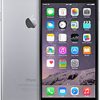 | Apple iPhone 6 Plus | 1.54 W/kg | 96.25% |
Tied 37th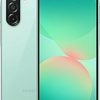 | Samsung Galaxy A26 | 1.54 W/kg | 96.25% |
Tied 37th | Samsung Galaxy S21 | 1.54 W/kg | 96.25% |
Tied 37th | Apple iPhone 12 Pro | 1.54 W/kg | 96.25% |
Tied 37th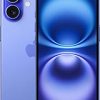 | Apple iPhone 16 | 1.54 W/kg | 96.25% |
38th | Samsung Galaxy A16 5G | 1.55 W/kg | 96.88% |
Tied 38th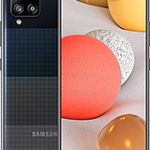 | SAMSUNG GALAXY A42 5G | 1.55 W/kg | 96.88% |
Tied 38th![samsung-galaxy-s21-plus-5g-[1]](https://www.rfsafe.com/wp-content/uploads/2020/12/samsung-galaxy-s21-plus-5g-1-66x66.jpg) | Samsung Galaxy S21 PLUS | 1.55 W/kg | 96.88% |
Tied 38th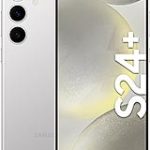 | Samsung Galaxy S24 Plus | 1.55 W/kg | 96.88% |
Tied 38th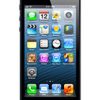 | Apple iPhone 5 | 1.55 W/kg | 96.88% |
| SAR Rank | Phone Model | Simultaneous Body SAR | % Legal Limit |
Tied 38th | Apple iPhone 12 | 1.55 W/kg | 96.88% |
Tied 38th | Apple iPhone 16 Pro Max | 1.55 W/kg | 96.88% |
Tied 38th | Apple iPhone 16 Plus | 1.55 W/kg | 96.88% |
39th | Apple iPhone 6s Plus | 1.56 W/kg | 97.5% |
Tied 39th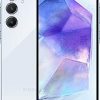 | Samsung Galaxy A55 | 1.56 W/kg | 97.5% |
Tied 39th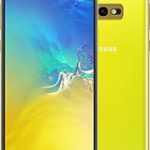 | Samsung Galaxy S10e | 1.56 W/kg | 97.5% |
Tied 39th![samsung-galaxy-s22-plus-5g[1]](https://www.rfsafe.com/wp-content/uploads/2021/12/samsung-galaxy-s22-plus-5g1-66x66.jpg) | Samsung Galaxy S22 Plus | 1.56 W/kg | 97.5% |
Tied 39th | Apple iPhone 7 | 1.56 W/kg | 97.5% |
Tied 39th | Apple iPhone 8 | 1.56 W/kg | 97.5% |
Tied 39th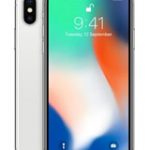 | Apple iPhone X | 1.56 W/kg | 97.5% |
| SAR Rank | Phone Model | Simultaneous Body SAR | % Legal Limit |
Tied 39th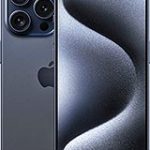 | Apple iPhone 15 Pro | 1.56 W/kg | 97.5% |
40th | Samsung Galaxy S21 Ultra | 1.57 W/kg | 98.13% |
Tied 40th | Samsung Galaxy S22 | 1.57 W/kg | 98.13% |
Tied 40th | Apple iPhone 12 Pro Max | 1.57 W/kg | 98.13% |
| 41st | Google Pixel 7a | 1.58 W/kg | 98.75% |
Tied 41st | Samsung Galaxy S20 | 1.58 W/kg | 98.75% |
Tied 41st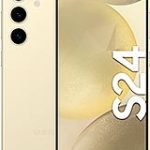 | Samsung Galaxy S24 | 1.58 W/kg | 98.75% |
Tied 41st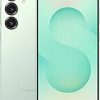 | Samsung Galaxy S25 Plus | 1.58 W/kg | 98.75% |
Tied 41st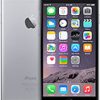 | Apple iPhone 6 | 1.58 W/kg | 98.75% |
Tied 41st | Apple iPhone SE | 1.58 W/kg | 98.75% |
| SAR Rank | Phone Model | Simultaneous Body SAR | % Legal Limit |
Tied 41st![apple-iphone-13-pro[1]](https://www.rfsafe.com/wp-content/uploads/2020/12/apple-iphone-13-pro1-66x66.jpg) | Apple iPhone 13 Pro | 1.58 W/kg | 98.75% |
Tied 41st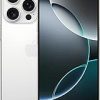 | Apple iPhone 16 Pro | 1.58 W/kg | 98.75% |
| 42nd | Google Pixel 8 Pro | 1.59 W/kg | 99.38% |
| Tied 42nd | Google Pixel 8a | 1.59 W/kg | 99.38% |
| Tied 42nd | Google Pixel 9 Pro | 1.59 W/kg | 99.38% |
| Tied 42nd | Google Pixel 9 Pro Fold | 1.59 W/kg | 99.38% |
| Tied 42nd | Google Pixel 8 | 1.59 W/kg | 99.38% |
| Tied 42nd | Google Pixel 9 | 1.59 W/kg | 99.38% |
| Tied 42nd | Google Pixel 9 Pro Xl | 1.59 W/kg | 99.38% |
Tied 42nd | Samsung Galaxy A36 | 1.59 W/kg | 99.38% |
| SAR Rank | Phone Model | Simultaneous Body SAR | % Legal Limit |
Tied 42nd | Samsung Galaxy S9 | 1.59 W/kg | 99.38% |
Tied 42nd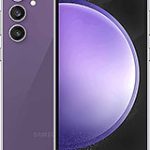 | Samsung Galaxy S23 Fe | 1.59 W/kg | 99.38% |
Tied 42nd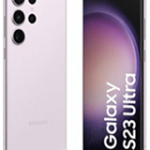 | Samsung Galaxy S23 Ultra | 1.59 W/kg | 99.38% |
Tied 42nd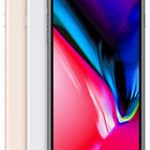 | Apple iPhone 8 Plus | 1.59 W/kg | 99.38% |
43rd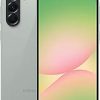 | Samsung Galaxy A56 | 1.60 W/kg | 100% |
Concerns have been raised about the potential health effects of exposure to radiofrequency radiation from wireless devices, particularly when multiple transmitters are active at the same time. This test covers the concept of “Simultaneous Body SAR”, which is a measure of the amount of RF energy absorbed by the body when multiple wireless transmitters are active at the same time.
About Simultaneous Body SAR: What You Need to Know
In this article, we will explore the concept of Simultaneous Body SAR in detail, including its history, testing procedures, and the latest research findings.
History of SAR Testing
SAR testing has been around for several decades, dating back to the 1980s when researchers first began to investigate the potential health effects of cell phone radiation. At the time, there was a great deal of uncertainty about the long-term effects of exposure to electromagnetic radiation. Some researchers were concerned that the radiation emitted by cell phones could cause cancer, while others argued that the radiation levels were too low to have any significant impact on human health.
To help settle the debate, researchers developed a standard method for measuring SAR, which involved using a phantom body that simulated the absorption characteristics of human tissue. The phantom body became known as the Specific Anthropomorphic Mannequin (SAM), and it’s still used today for SAR testing.
The Design and Limitations of the SAM Phantom
The SAM phantom is designed to represent the body of an average human being. It has specific dimensions for the size and shape of the head, as well as the thickness and composition of the skin, muscle, and other tissues. The SAM has a skin surface that is made of a material that simulates the dielectric properties of human skin.
During SAR testing, the wireless device is placed in different positions on the SAM phantom, including the front, back, and sides of the body. The SAR value is measured in watts per kilogram (W/kg), and represents the rate at which RF energy is absorbed by the tissue in the body that is closest to the device’s antenna.
The SAR Measurement Procedure
After the wireless device is placed on the SAM phantom, a radio frequency (RF) signal is sent to the device at its highest power level, and the SAR value is measured. The SAR measurement is done using a specific test protocol that involves a reference measurement, an area scan, a zoom scan, and a drift measurement. The same procedure is done with all test positions and wireless technologies for mobile phone testing.
Conclusion
SAR testing is a valuable tool for assessing the potential health risks associated with mobile phone use. The use of a standardized phantom and testing procedure allows for accurate and repeatable measurements of the amount of RF energy absorbed by the body when using a mobile phone. It is important to note that SAR values are just one factor to consider when assessing the potential health effects of mobile phone use, and consumers should take steps to minimize their exposure to radiofrequency radiation, such as using hands-free devices or keeping the phone away from the body.
FAQs
Q1. What is the difference between head and body SAR measurements?
Head SAR measurements are used to assess the potential health risks associated with the use of mobile phones near the head, while body SAR measurements assess the risks associated with using the phone near other parts of the body.
Q2. Are SAR values the only factor to consider when assessing the potential health risks of mobile phone use?
No, SAR values are just one factor to consider. Other factors such as duration of use, distance from the body, and specific absorption rates of different tissues should also be taken into account.
Q3. What is the safety limit for SAR values in the USA?
The safety limit for SAR values in the USA is 1.6 W/kg.
Q4. How can consumers minimize their exposure to radiofrequency radiation?
Consumers can minimize their exposure to radiofrequency radiation by using hands-free devices or keeping the phone away from the body.
Understanding Simultaneous Body SAR Values: What You Need to Know
The Importance of Simultaneous Body SAR Values in Measuring RF Exposure
Simultaneous Body SAR Values and Wireless Technologies: What You Should Know
How Simultaneous Body SAR Values are Measured and Why They Matter
Everything You Need to Know About Simultaneous Body SAR Values and Your Health